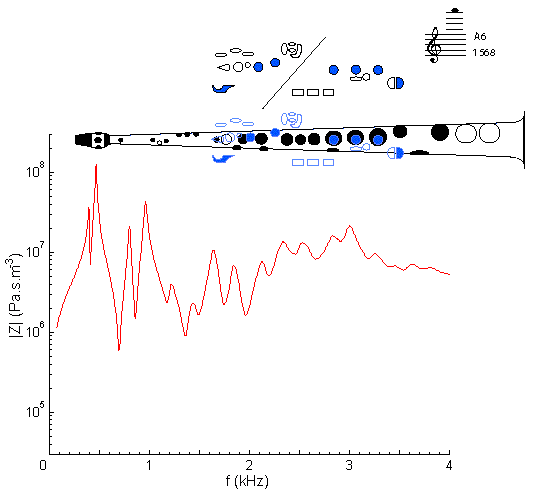| Acoustics of the saxophone |
Bb soprano saxophone |
A6 |
 |
Fingering Acoustic schematic Non-specialist introduction
to acoustic impedance Notes are the written pitch. |
This is the third note in the altissimo or very high range. It is not a member of a simple register: although technically it plays rather just below the seventh impedance peak, few saxophonists (except those discerning ones who have seen this site) would be aware of that. The first few peaks are very strong, and would tend to dominate (see comment on sound spectrum below).
The weakness of this peak (due to the relatively large cone angle of the saxophone) explains why notes in this range are hard to play and require the player to assist the weak impedance peak of the bore with a strong impedance peak of the vocal tract. See this page for an explanation and some interesting results.

Sound spectrum
of a Bb soprano saxophone
played using fingering for A6.
For more explanation, see
Introduction to saxophone acoustics.
|
Contact:
Joe Wolfe
/ J.Wolfe@unsw.edu.au |